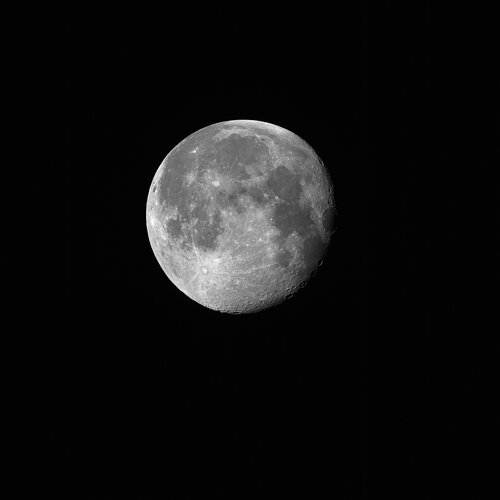On 20 September, the Copernicus Sentinel-2C satellite captured its first stunning image of the Moon, achieved by rolling the satellite sideways in a unique manoeuvre. Although Sentinel-2C is designed for Earth observation, this image – intended for calibration and cross-mission comparisons – exceeded expectations.
The image, with an impressive resolution of around 5 km, reveals notable lunar features, including the Copernicus Crater, the Tycho Crater and the lunar seas: the Sea of Tranquillity, the Sea of Moisture and the Sea of Clouds. This showcases the versatility of Sentinel-2C's multispectral imager, which usually operates from its 786 km orbit to capture high-resolution data of Earth's land and coastal waters.
This lunar image is part of a regular 'Moon calibration' process. Roughly once a month, the satellite will roll sideways to image the Moon instead of Earth. The Moon's well-known and stable light intensity allows us to detect and correct even the smallest changes in the instrument's performance, which can occur due to aging, such as optical coating degradation or detector drifts.
This process ensures the 'radiometric accuracy' of the data remains precise throughout the mission, a critical parameter for many applications.
The raw data initially displayed an elongated, eclipse-shaped Moon caused by the relative motion between the Moon and the satellite. A correction of this effect was carried out to realise this fantastic image.
Launched on 5 September 2024, Sentinel-2C joins its twin satellites in orbit continuing to deliver valuable high-resolution imagery for the Copernicus programme.



 Image:
On 20 September, the Copernicus Sentinel-2C satellite captured its first stunning image of the Moon, achieved by rolling the satellite sideways in a unique manoeuvre. Although Sentinel-2C is primarily designed for Earth observation, this image – intended for calibration and cross-mission comparisons – exceeded expectations.
Image:
On 20 September, the Copernicus Sentinel-2C satellite captured its first stunning image of the Moon, achieved by rolling the satellite sideways in a unique manoeuvre. Although Sentinel-2C is primarily designed for Earth observation, this image – intended for calibration and cross-mission comparisons – exceeded expectations.